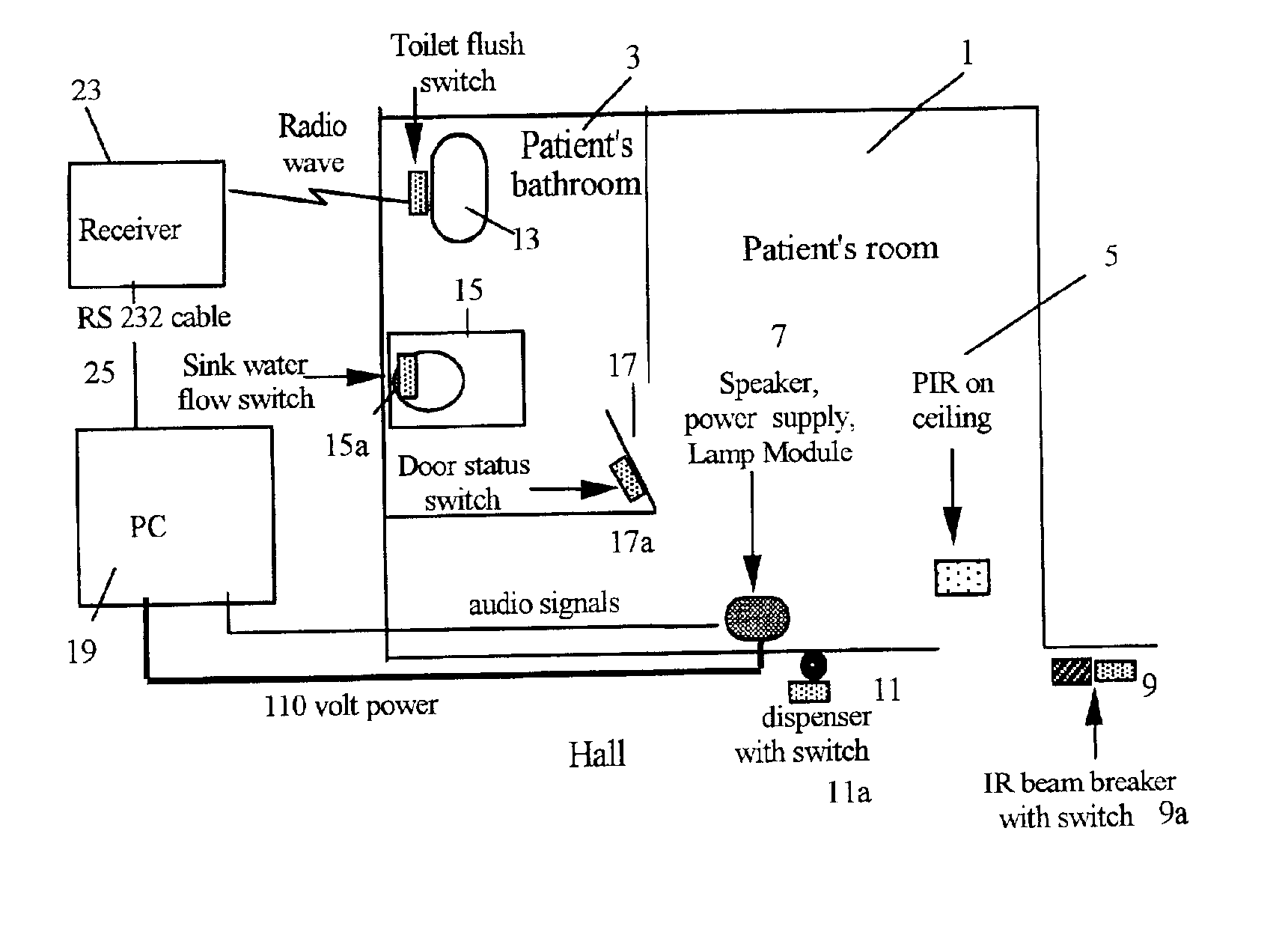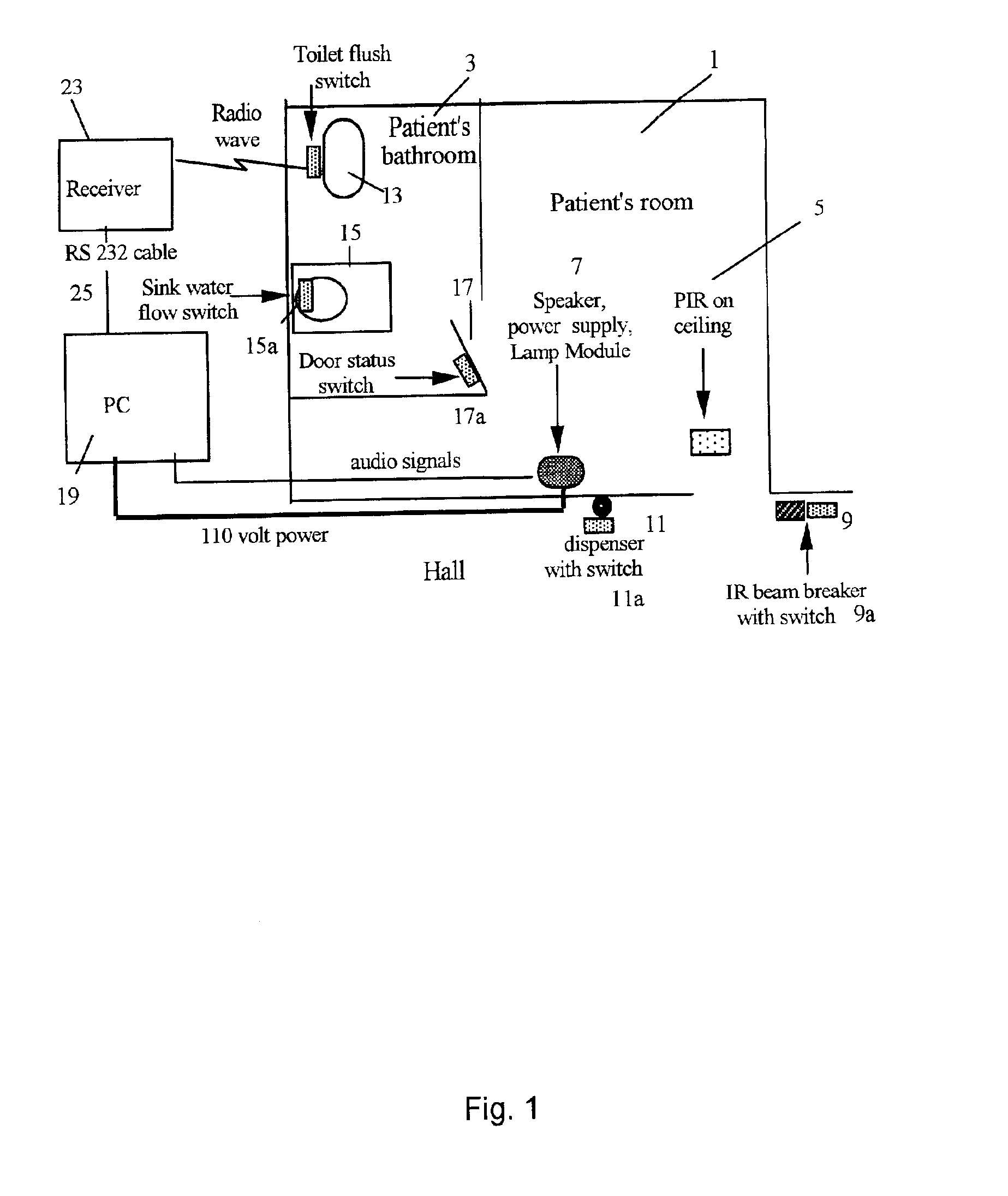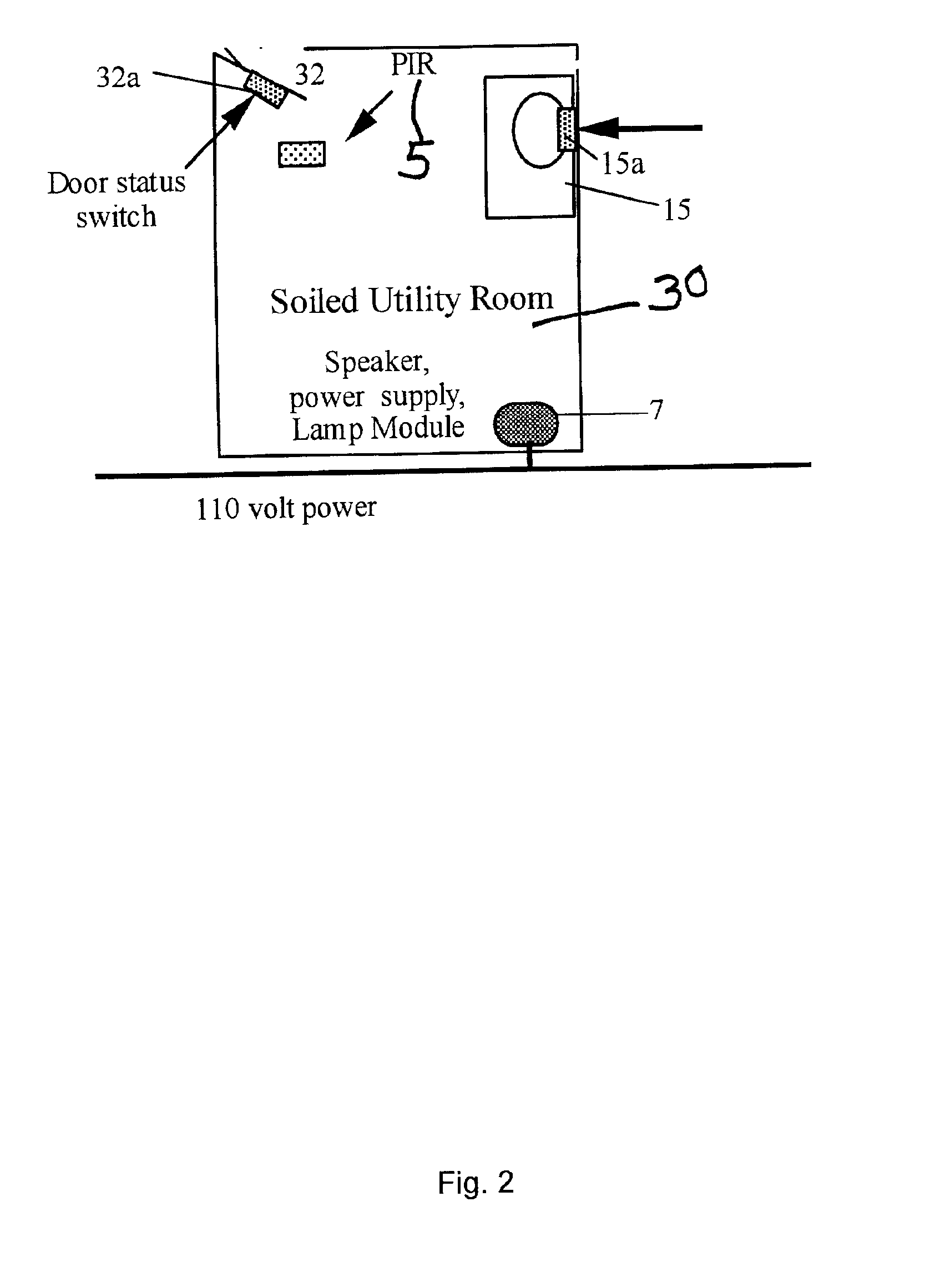Systems and methods for improving hand hygiene compliance
a hand hygiene and automatic prompting technology, applied in the direction of mechanical actuation of burglar alarms, instruments, electric signalling details, etc., can solve the problems of increasing the human and financial cost of care, extending the length of hospitalization, and significant health risks for hospitalized patients, so as to increase the frequency of handwashing
- Summary
- Abstract
- Description
- Claims
- Application Information
AI Technical Summary
Benefits of technology
Problems solved by technology
Method used
Image
Examples
Embodiment Construction
[0019]FIG. 1 illustrates a schematic view of a system according to a preferred embodiment of the present invention. The system includes patient room 1 and adjoining bathroom 3. As shown, located in patient room 1 is a passive infrared motion (PIR) / thermal detector 5 and a speaker / appliance module assembly 7. Located proximate to patient room 1 is an infrared (IR) beam breaker 9 / switch 9a and a dispenser 11 / switch 11a. Located inside bathroom 3 is toilet 13 / switch 13a, sink 15 / water flow switch 15a and bathroom door 17 / door status switch 17a. Computer 19 is connected via conventional modes such as radio waves or radio frequency signals (RF) to switches 9a, 11a, 13a, 15a, 17a and PIR 5. Receiver 23 is connected to computer 19 via a standard communications connection 25 such as RS-232.
[0020]In a preferred embodiment, door status switch 17a transmits a signal to computer 19 indicating whether bathroom door 17 is open or closed, the toilet flush switch 13a transmits to computer 19 when t...
PUM
 Login to View More
Login to View More Abstract
Description
Claims
Application Information
 Login to View More
Login to View More - R&D
- Intellectual Property
- Life Sciences
- Materials
- Tech Scout
- Unparalleled Data Quality
- Higher Quality Content
- 60% Fewer Hallucinations
Browse by: Latest US Patents, China's latest patents, Technical Efficacy Thesaurus, Application Domain, Technology Topic, Popular Technical Reports.
© 2025 PatSnap. All rights reserved.Legal|Privacy policy|Modern Slavery Act Transparency Statement|Sitemap|About US| Contact US: help@patsnap.com



